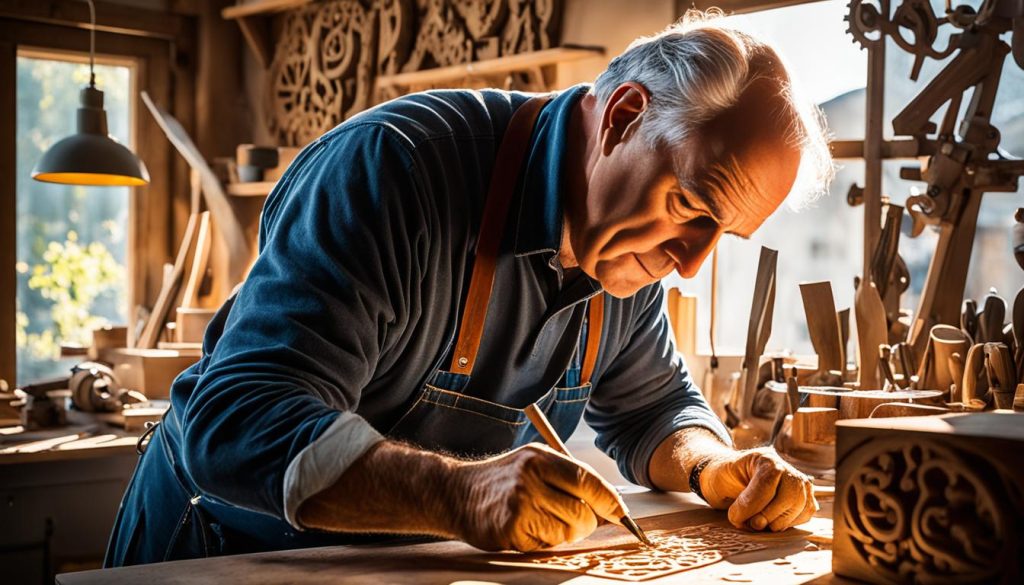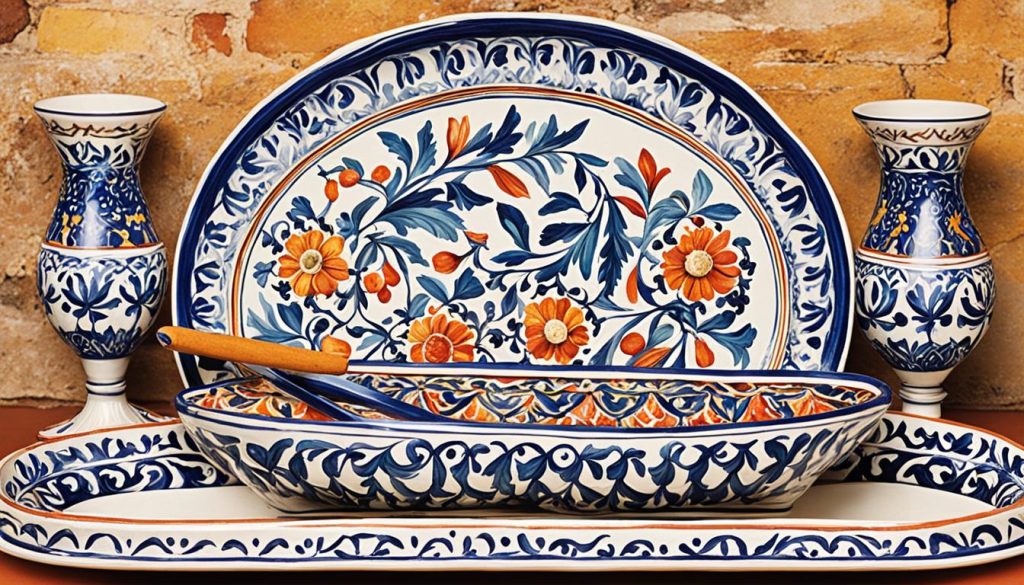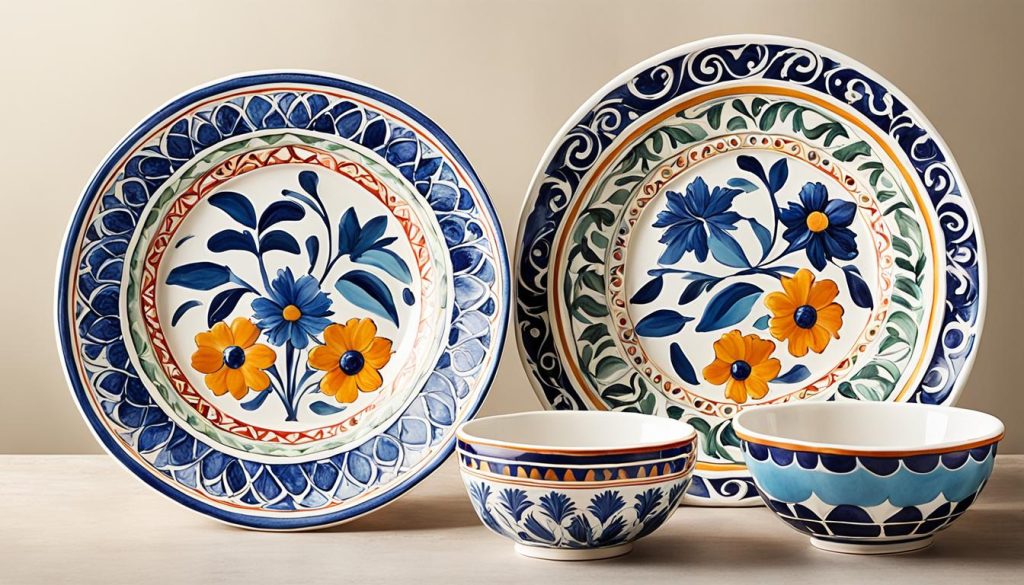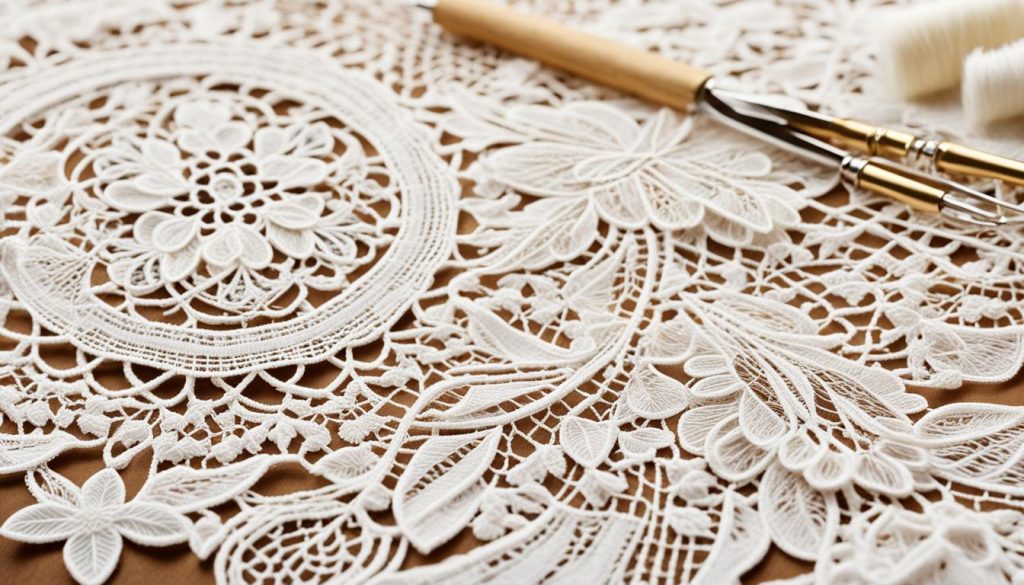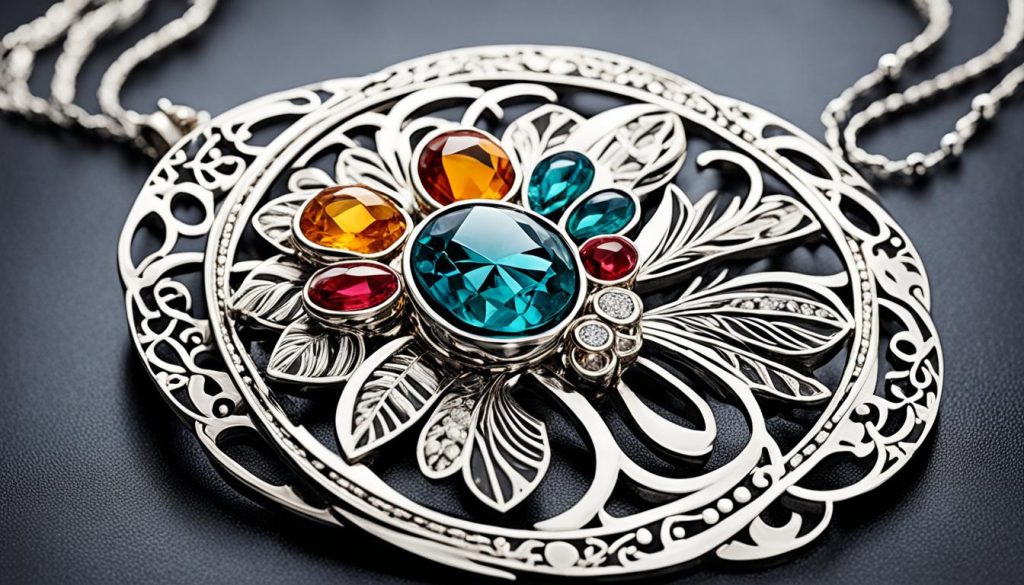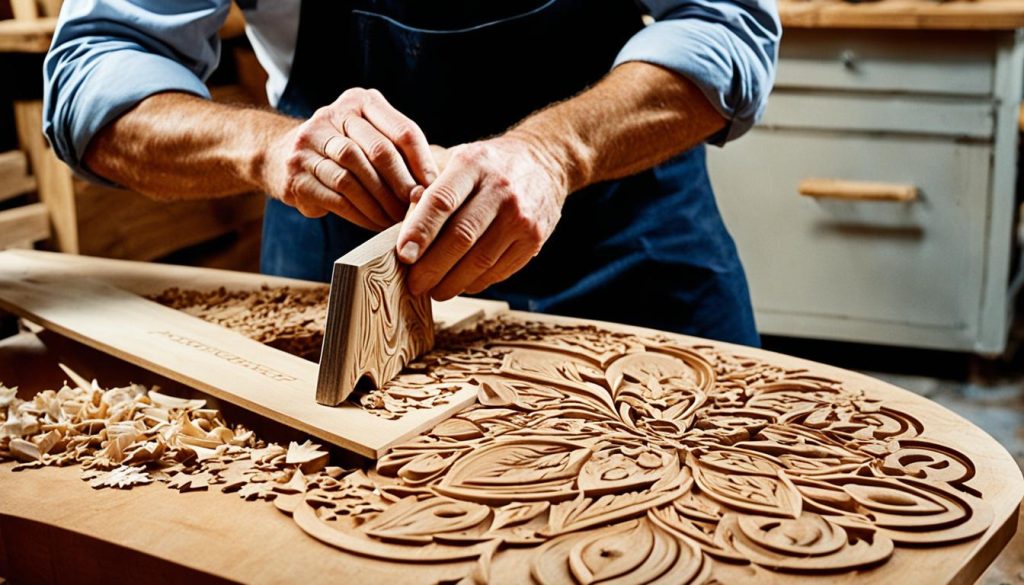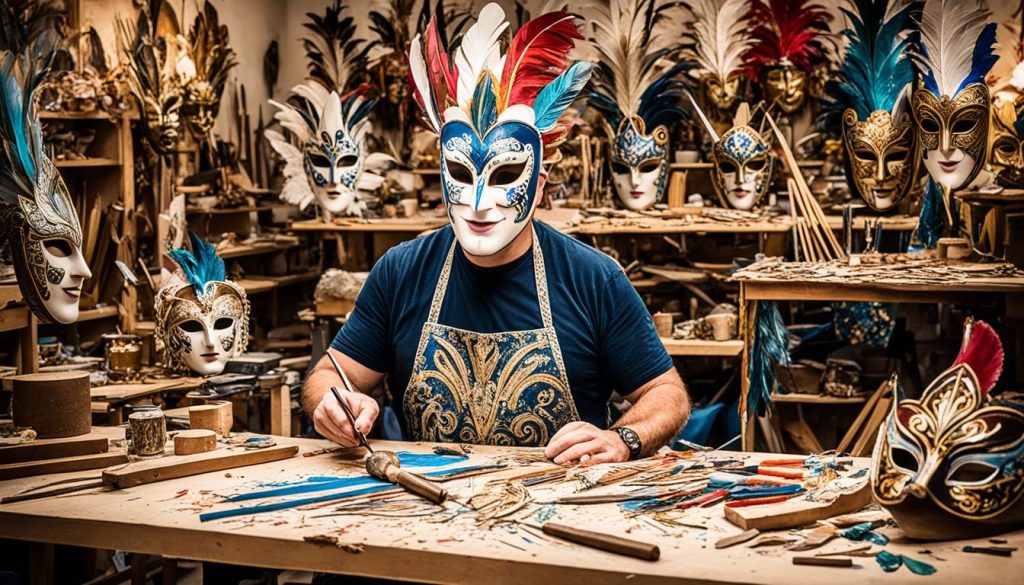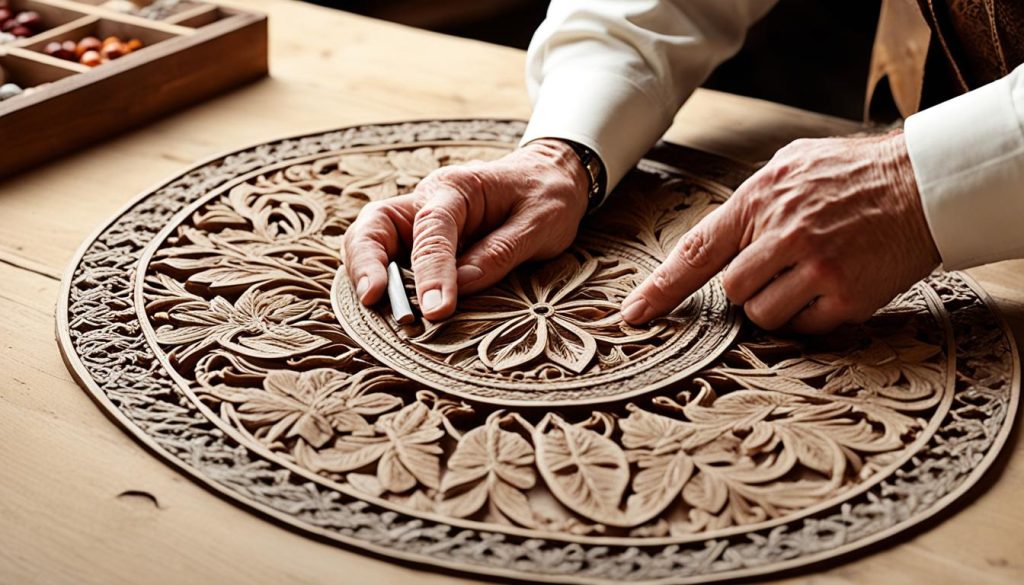The charm of authentic Italian crafts is like a beautifully made tapestry. It’s full of tradition and outstanding skill. These handmade items are more than just useful objects; they symbolise a cultural heritage refined through generations. Italian craftsmanship tells a story of ability, passion, and art, touching those who appreciate true artisan mastery.
- The Heritage of Italian Craftsmanship
- The Regions of Italy and Their Artisanal Specialties
- Materials and Techniques in Italian Craftsmanship
- Artisanal Crafts from Italy as a Form of Art
- Ceramics and Pottery: Italy’s Timeless Artforms
- The Art of Italian Textiles and Embroidery
- Stunning Italian Jewellery Making
- Woodworking and Furniture Design: Italy’s Living Traditions
- Iconic Italian Mask Making of Venice
- Preserving the Craft: Italian Artisanal Practices
- Integrating Contemporary Design with Traditional Techniques
- Italian Culinary Instruments: A Food Lover’s Craft
- Italian Artisanal Crafts in Modern Home Décor
- Conclusion
Italian artisanal crafts stand out for their beauty and variety. They display unique styles from areas known for special techniques and materials. Exploring this marvellous world, we connect with the tales behind each craft. We also celebrate the artisans committed to keeping their traditions alive amidst the rush of modern manufacturing. Let’s discover the rich world of Italian artisanal crafts, where each item speaks of timeless beauty and exceptional skill.
The Heritage of Italian Craftsmanship
Italy’s craft tradition is much more than just its history. It’s about the talented hands that make these pieces. The story of Italy’s craftsmanship is filled with innovation and culture. It dates back from the Etruscans to the height of the Renaissance.
The Historical Significance of Artisanal Crafts in Italy
For centuries, Italian artisanal crafts have been vital to the country. They played a key role especially during the Renaissance. The Italian Ministry of Cultural Heritage and Activities and Tourism recognises their value. Craftsmanship has boosted both Italy’s daily life and its global standing.
Tales of famous artisans fill Italy’s history. They show how art and business have brought Italy worldwide respect.
How Italian Artisans Preserve Cultural Legacy
Keeping Italian handmade traditions alive does more than honour history. It keeps Italy’s cultural identity vibrant. In arts and crafts documentaries, current artisans share their commitment to old ways.
Whether it’s goldsmiths from ‘Associazione Orafa Valenzana’ or painters from Florence, they lead the charge. These modern creators ensure the stories and quality of Italian craft live on for others to see and appreciate.
The Regions of Italy and Their Artisanal Specialties
Italy’s history and culture shine through its artisanal crafts. The beautiful Tuscan hills and Venice’s calm canals each offer unique and prized crafting traditions. These traditions show the amazing skills of Italian artisans and the strong spirit of Italy’s heritage.
Tuscany’s Leather and Textiles
Tuscany is famous for its high-quality leather. Its goods reflect the region’s long history in the global fashion scene. Master artisans have honed their skills over centuries. They create luxury items that are both timeless and elegant. People from all over admire Tuscan wallets, belts, and handbags. They make Tuscany a key place for Italian crafts.
- The meticulous attention to detail in Tuscan leather workshops
- The historical evolution of textile production in the region
- The impact of Tuscany leather goods on international markets
Venice’s Glassblowing Traditions
Venetian glassblowing is more than just a craft; it’s a show of skill and imagination. Murano’s glassmakers, with their rich history, captivate people as they work. They turn molten glass into beautiful art. Their work makes Venetian glass sought after worldwide. This craft is a key part of Italy’s cultural identity. It helps make Italian crafts famous globally.
- The precise and considered movements that give form to molten glass
- The survival and modern-day relevance of Venetian glassblowing techniques
- The defining characteristics of Murano glass that transcend ordinary craftsmanship
Tuscany leather and Venetian glassblowing are more than just products. They are stories of Italy’s dedication to craftsmanship. They set high standards for crafts worldwide.
Materials and Techniques in Italian Craftsmanship
Italy is known for its top-notch artisanal tradition. This tradition is rooted in its vast and sustainable local resources. These resources provide a strong foundation for the Italian way of crafting. The choice of high-quality, natural materials not only makes the products look more appealing. It also shows the artisans’ dedication to sustainability and quality.
The Role of Local Materials in Craftsmanship
Italian craftsmanship thrives on using local materials. Materials like the beautifully veined Carrara marble and the easily shaped terracotta clay from Tuscany are prime examples. Artisans use these materials to create works that mirror their cultural identity. They focus on using sustainable local resources. This ensures they keep true to their ecological values. At the same time, they turn Italy’s natural gifts into lasting works of art.
Ancient Techniques Still Practised Today
In Italy’s historic workshops, traditional crafting methods are alive and well. Techniques like glassblowing, weaving, and detailed metalworking aren’t just kept alive; they’re celebrated. Italian artisans use their skills to transform raw materials into priceless treasures. By mixing history with skill, they produce items of enduring value. Craft museums in Italy work to share these unique skills. They aim to keep the spirit of Italian craftsmanship alive for future generations.
- Sculpting with marble and alabaster, echoing the genius of Renaissance sculptors
- Transforming wool into woven tapestries, each thread spun with stories of heritage
- Mastering the forge in metalworking, producing intricate jewellery and ironwork
In today’s world, where innovation is key, Italian artisans stay true to their roots. They blend ancient wisdom with modern trends. This approach ensures that their materials and methods, rich in history, meet today’s needs. This is how tradition and innovation come together in perfect harmony.
Artisanal Crafts from Italy as a Form of Art
Italian artistry shines in a world filled with mass-produced items. These crafts are more than just items. They’re seen as a form of vibrant culture, each with its own story. They connect deeply with those who cherish them, beyond their practical use.
Artisans show us Italy’s spirit through their work. Every stitch and brushstroke speaks of tradition. Whether it’s a Murano glass vase or a Florentine leather journal, these items are treasures.
Art lovers and curators recognize these crafts as artworks. They feature them in galleries and shows, treating them as masterpieces. This helps people see these crafts as important as paintings or sculptures.
Tradition meets modern interest at artisan fairs worldwide. These events, like the Florence Biennale, highlight the incredible work of Italian craftspeople. They bring artisans and art lovers together to celebrate Italian creativity.
These Italian crafts represent the country’s art legacy. From woven baskets in Sardinia to ceramics in Sicily, each piece tells a story. Owning collectible Italian crafts means being part of a tradition of excellence and passion for Italian culture.
Ceramics and Pottery: Italy’s Timeless Artforms
Italian ceramic art shows a tradition rich in skill and history. Each piece tells a story from the past. The areas of Deruta and Faenza are famous for their ceramic art. They have left a lasting impact on Italy’s culture and creativity.
Famous Ceramic Regions: Deruta and Faenza
Deruta, a quaint town in Umbria, is a hub for pottery. It’s famed for its colourful Deruta pottery. Centuries-old techniques allow artisans to create identifiable designs known worldwide. Their work is known for detailed motifs and rich glazes.
In the Emilia-Romagna region lies Faenza, known for its impressive ceramics. Faenza is famous for its majolica-ware, which dates back to the Renaissance. Its designs are so renowned that ‘faience’ now means majolica pottery in several languages. This shows the global influence of their craft.
Decoding Symbols in Italian Pottery
Italian pottery uses symbols and patterns to tell ancient stories. Art historians study these to understand local legends and family crests. These symbols reflect Italy’s landscapes and history.
Studying these ceramics reveals the heritage of Italian communities. As these areas promote their pottery, they don’t just make objects. They preserve Italian traditions in clay.
- The ‘Raffaellesco’ dragon brings good luck and comes from Raphael’s paintings.
- Majolica plates with ‘La Giostra’ reflect medieval festivities.
- The sunflower in Deruta pieces shows the beauty of Italy’s countryside.
Italian ceramics from Deruta and Faenza blend history, art, and identity. By keeping Deruta’s stories and Faenza’s history alive, these crafts are more than art. They’re a cultural link between the past, present, and future. They showcase Italian brilliance.
The Art of Italian Textiles and Embroidery
Italy’s artistry shines in its beautiful textiles and detailed patterns. The famed Italian lace, skilled silk making, and traditional embroidery connect the past with the present. These crafts symbolise a long-standing tradition.
From Lace-Making to Luxurious Silks
On the island of Burano, artisans excel in lace crafting, a skill perfected over generations. In Como, silk production creates luxurious brocades. Fashion experts observe how these crafts evolved with Italy’s history.
The focus on detail and commitment to quality keep Italian silk and lace-making alive in fashion. These traditions stand out for their excellence.
The Colourful World of Italian Textile Patterns
In Italy’s artisanal world, one finds unique textures and patterns. These designs tell stories of pride and history. Traditional embroidery in Italy uses vibrant colours and motifs, reflecting the country’s cultural legacy.
The fashion and design industries highly value these textiles for their beauty and craftsmanship. They are sought after for their stories and quality.
- Analyses of fashion history document the transcendent nature of Italian lace making and silk production.
- Italian textiles lend themselves to iconic patterns loaded with historical and regional significance.
- The enduring craftsmanship of these fabrics places Italy at the pinnacle of the fashion and design sectors worldwide.
Italian textiles mix colour, texture, and history, highlighting Italy’s role in luxury craftsmanship. This blend tells Italy’s enduring story.
Stunning Italian Jewellery Making
The realm of Italian goldsmiths is rich in history, loved across the world. These craftsmen keep alive traditional jewellery crafting methods. Their creations are not just jewellery, but art and a piece of culture too.
The Centuries-Old Tradition of Goldsmithing
Italy has a long history in jewellery making, thanks to generations of skilled goldsmiths. Their skills include hand-engraving and shaping precious metals. From ancient Roman times to the Renaissance, these artisans have built Italian jewellery crafting’s reputation.
Innovative Designs in Contemporary Italian Jewellery
Today’s Italian jewellers respect their heritage but also seek new ideas. This mix leads to innovative Italian jewellery. These designs connect the past with future ambitions, attracting people worldwide.
Keeping up with trends, they add unique touches to every piece. This approach places Italy at the forefront of the modern jewellery scene.
- Awards-laden designers reflecting the avant-garde of fashion
- Exquisite pieces that embody the Italian flair for sophisticated design
- Eco-conscious practices that herald a new chapter in jewellery making
Italian goldsmiths craft pieces that are both timeless heirlooms and modern fashion statements. This remarkable blend ensures Italy remains a leading light in the world of jewellery.
Woodworking and Furniture Design: Italy’s Living Traditions
Italian culture shines through its woodworking tradition. This craft embeds the Italian spirit into its famous furniture design. From Tuscany’s green hills to Lombardy’s busy areas, Italian woodworking showcases a rich, artisan history.
Craftsmanship in Olive Wood and Chestnut
The beauty of traditional Italian furniture comes from its materials too. Olive wood adds a Mediterranean charm with its unique patterns and warm hues. Expert crafters turn this strong wood into olive wood crafts that showcase Italian style. Chestnut, known for its durability, provides a reliable foundation for timeless furniture.
The Evolution of Italian Furniture Over the Centuries
The story of traditional Italian furniture covers various styles and times. We see the grandeur of the Renaissance and the simple elegance of neoclassical designs. Modern artisans balance respect for history with a minimalistic and innovative approach. This blend keeps Italian furniture fresh and captivating.
- Historical significance of woodworking regions in Italy.
- Distinctive properties of olive wood and chestnut.
- Integration of ancient methods in modern furniture making.
- Evolving trends in Italian furniture while retaining classical elements.
Italian woodworking is a blend of history and innovation. It brings together age-old techniques with modern trends. This blend ensures traditional Italian furniture honors its origins while pushing boundaries into the future.
Iconic Italian Mask Making of Venice
Take a trip through Venice’s canals and narrow lanes. Here, the soul of Venice shines in its famous mask making. Beyond the charm of gondolas and St. Mark’s grand sights, these masks are the heart of Italian carnival art. They tell stories of mystery, intrigue, and the bright flair of the Renaissance.
The Secrets Behind the Craft
Creating Venetian masks is an old craft, a blend of art that turns simple materials into festive symbols. These masks start as bits of paper or clay. But with detailed crafting and decorating, they turn into icons of Italian skill. This tradition has been kept alive for ages, capturing Venice’s history in each mask’s shape and hue.
Commedia dell’Arte and Its Influence on Mask Designs
Commedia dell’Arte masks are pivotal in Italian carnival art. The faces of Harlequin, Pantalone, and Columbina are not just masks. They embody a deep theatre tradition. By studying Commedia dell’Arte, creators and historians can reflect its vivid expressions in mask designs. These characters’ famous traits live on, highlighting Venetian culture during the Carnival and more.
The tradition of Venetian mask making continues, maintaining the charm of Italian carnival crafts. Whether held by someone at a festival or hanging on a wall, these masks carry the ongoing story of an art tied to Venice’s identity. They remind us of Commedia dell’Arte’s lasting impression on the city’s famous squares.
Preserving the Craft: Italian Artisanal Practices
In Italy’s beautiful alleyways, artisans keep a treasured legacy alive. It’s tied to the nation’s cultural heart. In a world adapting quickly to mass production, saving Italian crafts is crucial. This ensures Italy’s artistry and stories won’t disappear over time.
Modern Challenges for Italian Artisans
Italian artisans face big hurdles. They’re struggling to keep traditional methods alive amid a flood of factory-made goods. Globalisation brings tough competition, making it hard for handmade items to keep up. Supporting these artisans is about more than pride; it’s key for the economy too.
Initiatives to Keep the Traditions Alive
Yet, hope remains through the efforts to preserve Italian craft skills. Advocates for artisans are finding ways to keep these traditions going. They’re targeting markets that appreciate real craftsmanship. Important efforts include:
- Apprenticeship programmes designed to pass skills to the next generation,
- Artisan cooperatives that unite craftspeople to strengthen their market presence,
- Governmental schemes focused on the revitalisation of artisanal industries, and
- Technological integration which opens new avenues to reach an appreciative global audience.
Success stories show communities getting behind their local artisans. Through social media and the internet, artisans can now showcase their works far and wide. These efforts ensure the light of Italian craftsmanship burns bright for the future.
Integrating Contemporary Design with Traditional Techniques
In the world of Modern Italian craftsmanship, old and new come together beautifully. Innovative Italian artisans are mixing contemporary artisanal design with classic skills. They create pieces that are both timely and timeless.
Italian artisans are known for their dedication to craft and innovation. From Milan to Florence, their workshops are alive with new ideas on classic themes. They produce a range of items that are both unmistakably Italian and refreshingly modern.
- Exploration of design concepts that reflect modern sensibilities while being anchored in artisan genealogy
- Spotlight on art pieces and everyday objects that tell a story of cultural tenacity
- Celebration of artisans who respect the sanctity of their traditional mediums, yet dare to innovate
This perfect mix of old and new makes modern Italian craftsmanship popular worldwide. Artisans are blending tradition with innovation to create something special. They are making history by bringing fresh ideas to old methods.
- Hand-crafted furniture that marries sleek lines with old-world woodworking
- Textiles where time-honoured patterns are given a vibrant, current twist
- Ceramics that juxtapose classical forms with avant-garde glazing techniques
This trend is about more than keeping old methods alive. It’s about making them flourish today. Innovative Italian artisans are at the forefront, merging their heritage with new ideas. They ensure Italian craftsmanship stays relevant and vibrant.
Italian Culinary Instruments: A Food Lover’s Craft
The world of Italian cookware craftsmanship is more than food prep. It’s an art that makes cooking special. Every cookware piece tells a story of tradition and excellence. When it comes to coffee, traditional espresso machines from Italy show the country’s passion for quality coffee.
Handcrafted Italian Cookware
Fine dining fans know the importance of top-notch cookware in making real Italian food. Skilled artisans make these essential culinary artisanal tools. They bring years of skill. Italian chefs and culinary historians say these tools are key for authentic taste.
Each item, like a heavy cast-iron skillet or a fine terra cotta pot, marks Italian heritage. They’re crucial whether you’re making a thick ragù or a perfect branzino. Italian cookware does its job and tells a story with each meal.
The Craft of Perfecting the Espresso Machine
Italy is famous for its coffee, with espresso machines at the heart of Italian cookware craftsmanship. These machines, often hand-made, show Italy’s smart design and love for coffee. Makers discuss the detailed making process—from engineering to the final smooth crema of an espresso.
Like Italy’s custom suits, every part of a traditional espresso machine can be tailored. This shows the dedication of Italian artisans. Their work elevates culinary artisanal tools beyond simple tools. They become key pieces in kitchens and coffee shops worldwide.
Italian Artisanal Crafts in Modern Home Décor
Modern homes are bringing Italian home décor into their spaces, blending old and new beautifully. This mix shows the timeless skill of artisans. It’s becoming popular in the UK to have décor that mixes modern traditional home accents with a touch of history.
Blending Tradition With Modern Aesthetics
Handcrafted Italian accessories are getting lots of love for their role in modern interiors. These items aren’t just pretty. They’re full of history and made using age-old techniques. Designers are making rooms that really highlight these pieces. They mix new trends with traditional craftsmanship really well.
Handmade Italian Home Accessories in the Limelight
Italian home décor pieces are becoming the stars of many rooms. Things like painted ceramics and ironworks show off Italian talent. They’re getting more popular in magazines and on blogs. This attention celebrates the artists behind them and encourages more wonderful work that fits modern styles.
Whether it’s a light fitting with hints of Florence or a bold piece showing its Sicilian heritage, these items add elegance. They bring a story and sophistication into a home.
This mix of old and new makes a home feel genuine and stylish. Going through modern rooms, we see the craftsmanship of Italian tradition. It’s alive in our homes with modern traditional home accents.
Conclusion
The journey through Italian artisanal crafts brings us to a crucial point where we both appreciate and take action. This legacy is more than just history; it’s a vibrant part of Italy’s culture today. It tells a story in every glass blown in Venice and every leather piece stitched in Tuscany.
Looking ahead, we see the vital role of preserving this heritage. It’s essential for keeping creativity and unmatched skill alive. Supporting the artisans means their ancient crafts and wisdom can thrive into the future. They mould the future while respecting the past, ensuring the craft’s essence remains.
We must do more than just admire these craftspeople; we need to support them. Investing in these traditions enhances the world’s beauty and diversity. Bringing Italian handmade items into our lives helps keep the artisans’ legacy alive. By valuing these traditions, we celebrate a heritage that binds the past, present, and future. Let’s cherish and uphold the legacy of Italian craftsmanship for generations to come.

